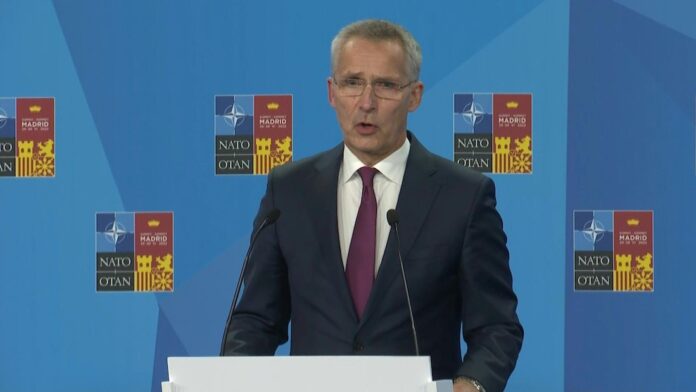MADRID: Secretary-General Jens Stoltenberg said the alliance was meeting in Madrid “in the midst of the most serious security crisis we have faced since the Second World War.”
Russia’s invasion of Ukraine has shattered Europe’s peace and driven NATO to pour troops and weapons into eastern Europe on a scale not seen since the Cold War.
Members of the alliance have also sent billions in military and civilian aid to Ukraine. The 30 NATO leaders will hear directly from Ukrainian President Volodymyr Zelensky, who is likely to ask them to do even more when he addresses the gathering by video link.
Money could be a sensitive issue — just nine of NATO’s 30 members currently meet the organization’s target of spending 2 percent of gross domestic product on defense.
The war has already triggered a big increase in NATO’s forces in the east, and allies are expected to agree at the summit to increase the strength of the alliance’s rapid reaction force nearly eightfold, from 40,000 to 300,000 troops by next year. The troops will be based in their home nations, but dedicated to specific countries on NATO’s eastern flank, where the alliance plans to build up stocks of equipment and ammunition.
Stoltenberg said NATO was undertaking “the biggest overhaul of our collective defense since the end of the Cold War.”
The leaders are also set to publish NATO’s new Strategic Concept, its once-a-decade set of priorities and goals.
Russia is set to be declared the alliance’s number one threat, but the document will also set out NATO’s approach on issues from cybersecurity to climate change — and the growing economic and military reach of China. For the first time, the leaders of Japan, Australia, South Korea and New Zealand are attending the summit as guests, a reflection of the growing importance of the Indo-Pacific region.
The summit opened with one problem solved, after Turkey agreed Tuesday to lift its opposition to Sweden and Finland joining NATO. In response to the invasion, the two Nordic nations abandoned their long-held nonaligned status and applied to join NATO as protection against an increasingly aggressive and unpredictable Russia — which shares a long border with Finland.
Stoltenberg said leaders of the 30-nation alliance will issue a formal invitation Wednesday to the two countries to join. The decision has to be ratified by all individual nations, but he said he was “absolutely confident” Finland and Sweden would become members.
Stoltenberg said he expected the process to be finished “rather quickly,” but did not set a time on it.
Sign in
Welcome! Log into your account
Forgot your password? Get help
Password recovery
Recover your password
A password will be e-mailed to you.

